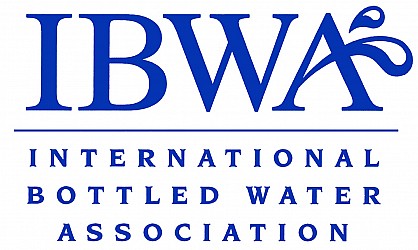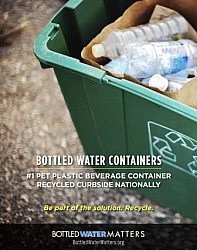The International Bottled Water Association (IBWA) prides itself on being the go-to  source of information for all types of bottled waters. Founded in 1958, IBWA's member companies include U.S. and international bottlers, distributors, and suppliers.
source of information for all types of bottled waters. Founded in 1958, IBWA's member companies include U.S. and international bottlers, distributors, and suppliers.
Humans have been putting water in vessels since the beginning of civilization. In 1622, the monks at Great Malvern Priory bottled water from the Holywell Spring in the Malvern Hills (UK) for local distribution. The famous Jacob Schweppe, who patented his process of creating mineral water in 1783, commercialized the Malvern Water in 1843, bottling the prized water and sending it throughout England.
Natural spring water (“spas”) was all the rage during the 17th and 18th centuries for its reported therapeutic and healing properties. Some of the earliest bottled water in America was from the waters of Jackson’s Spa in Boston, where bottling began in 1767. Carbonated water grew in popularity in the 1800s. Advances in technology and manufacturing of glass bottles during the 1800s led to larger scale production of bottled water. Moreover, bottled water was often viewed as a safer and cleaner alternative to municipal water supplies. While chlorination of water helped to clean-up the nation’s municipal drinking water, bottled water continued to grow in popularity around the world as Perrier and other specialty water companies entered the market.
Bottled water packaging was revolutionized with the commercial introduction of high density polyethylene in the 1960s. The patenting of polyethylene terephthalate (PET) bottles in 1973 brought to market the first plastic bottle to be able to withstand the pressure of carbonated liquids. PET plastic, with its lightweight and breakage resistance characteristics, eventually rose to replace glass as the preferred material for single-serving bottled water.
Today in the U.S., bottled water is the second largest commercial beverage consumed. Its consumption is about half that of carbonated soft drinks and slightly ahead of the consumption of milk and beer.
Unifying the Industry
Working to unite the bottled water industry, IBWA promotes its member’s commitment to the safety and availability of bottled water worldwide. IBWA’s 640 members are diverse; some are large, internationally known companies, while 60% of IBWAs members are small, locally owned businesses.
To achieve its goals and best represent its members and the bottled water industry, IBWA established a system of committees to develop objectives and execute successful programs. These committees include: Communications, Education, Environmental Sustainability, Government Relations, Membership, State and Regional Associations, Supplier and Convention, and Technical.
Safety and Environment
IBWA champions bottled water as an important choice for healthy hydration and lifestyle, and promotes an environmentally responsible and sustainable industry.
IBWA works with the U.S. Food and Drug Administration (FDA), which regulates bottled water as a packaged food product, to set comprehensive and stringent standards for safe, high-quality bottled water products. All IBWA bottler members must comply with FDA and state regulations, as well as meet the IBWA Bottled Water Code of Practice standards. IBWA’s Code of Practice mandates additional standards and practices that in some cases are more stringent than federal and state regulations and which are verified by annual plant inspections conducted by an independent, third-party organization.
IBWA is an active supporter of Drink Up, an initiative of First Lady Michelle Obama and the Partnership for a Healthier America (PHA). The campaign promotes water as the healthy beverage choice and encourages Americans to drink more water more often – whether from the tap, a filter, or in a bottle.
Source Reduction & Recycling
By lightweighting its packaging, the bottled water industry has reduced the amount of plastic used to make bottled water containers. Between 2000 and 2014, the average weight of a 16.9-ounce PET (half-liter) plastic bottle has dropped 48%. IBWA and the bottled water industry are working on innovative ways to improve recycling, including expanding the use of recycled PET (rPET). According to IBWA, many bottled water companies already use up to 50% recycled material in their plastic bottles.
to 50% recycled material in their plastic bottles.
At 37%, the recycling rate for single-serve PET plastic bottled water containers has doubled in the past nine years. And, 3 and 5 gallon plastic bottled containers are typically reused between 30-50 times before being recycled.
The bottled water industry supports strong community recycling initiatives. IBWA developed its Material Recovery Program (MRP), a collaborative joint venture between businesses and government to improve recycling and waste education and collection efforts for all packaged goods.
Why NERC
States Claire Crane, IBWA’s Program Coordinator for Education, Science, and Technical Relations, “by partnering with organizations like NERC and becoming an Advisory Member, IBWA is able to expand upon its recycling and source reduction efforts while developing new and important affiliations.”

